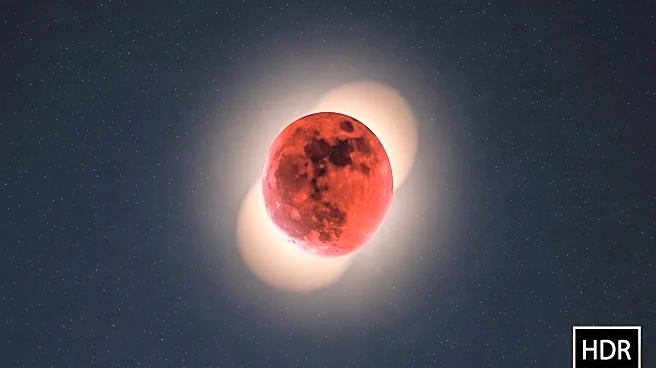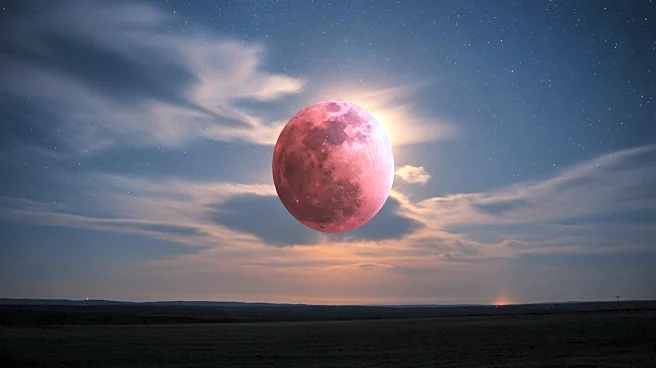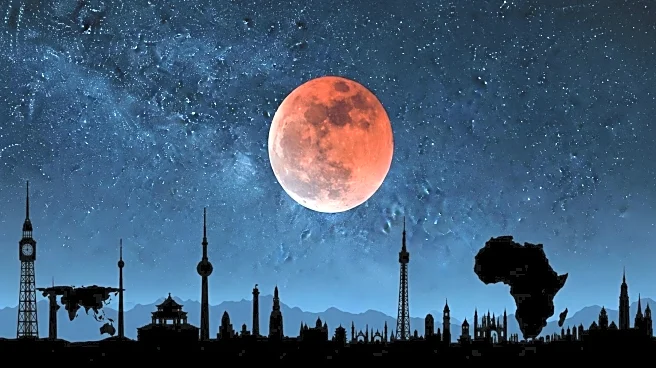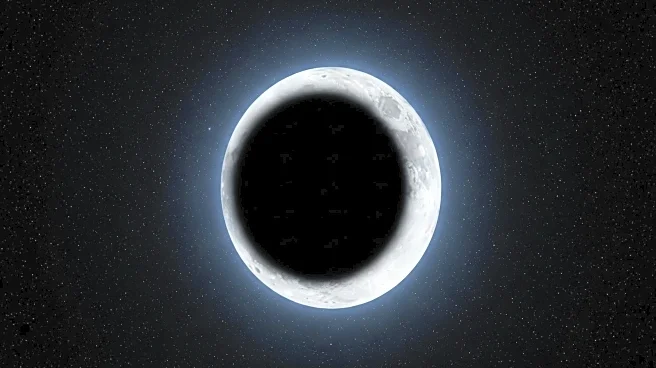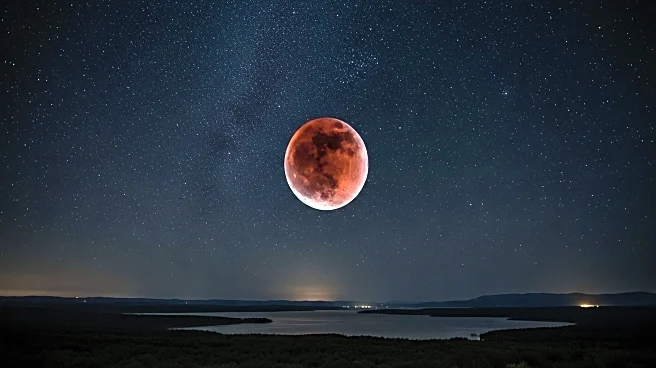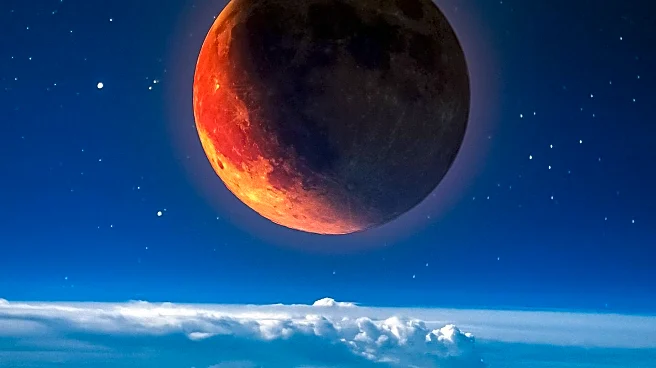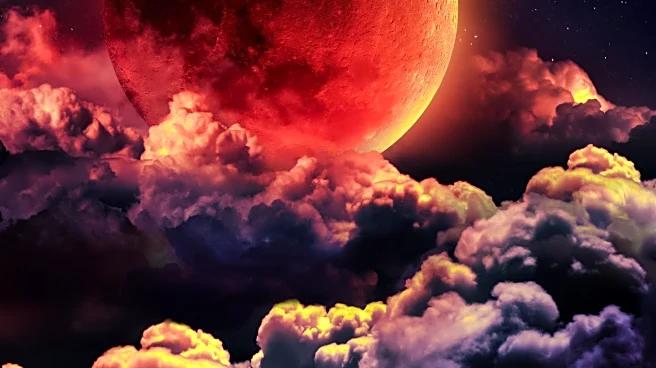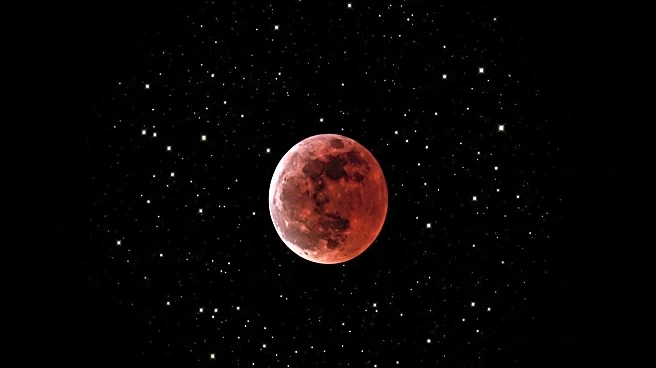What's Happening?
A total lunar eclipse will occur on September 7, 2025, creating a 'blood moon' visible primarily in Asia, Australia, Eastern Europe, and Eastern Africa. During this event, the Earth will block sunlight from directly reaching the moon, causing it to appear red due to the filtering of blue light by Earth's atmosphere. The eclipse coincides with September's full moon, known as the corn moon, which will reach peak brightness at 2:09 p.m. ET. Although the Americas will not witness the eclipse, the moon will remain nearly full for several days, offering extended viewing opportunities.
Why It's Important?
This lunar eclipse is a rare astronomical event, as total eclipses occur less frequently than partial ones. It provides a unique opportunity for scientific study and public engagement in regions where it is visible. The event can enhance interest in astronomy and space science, potentially inspiring educational programs and public outreach. Economically, it may attract tourists to areas within the eclipse's path, benefiting local businesses and communities. The cultural significance of a blood moon can also spark interest in the myths and traditions associated with lunar events.
What's Next?
The next total lunar eclipse will occur in March 2026, primarily visible over the Atlantic Ocean. Future eclipses will continue to offer opportunities for scientific research and public engagement. As technology improves, live broadcasts and interactive experiences may become more common, allowing broader audiences to participate in these celestial events. Educational institutions and observatories may use these opportunities to promote science literacy and inspire the next generation of astronomers.
Beyond the Headlines
Lunar eclipses can serve as a reminder of the intricate dynamics of our solar system and the role of Earth's atmosphere in shaping our view of the cosmos. They can also foster a sense of global unity, as people across different regions share in the experience of observing the same celestial event. The cultural narratives surrounding blood moons can enrich our understanding of human history and the diverse ways societies interpret natural phenomena.
